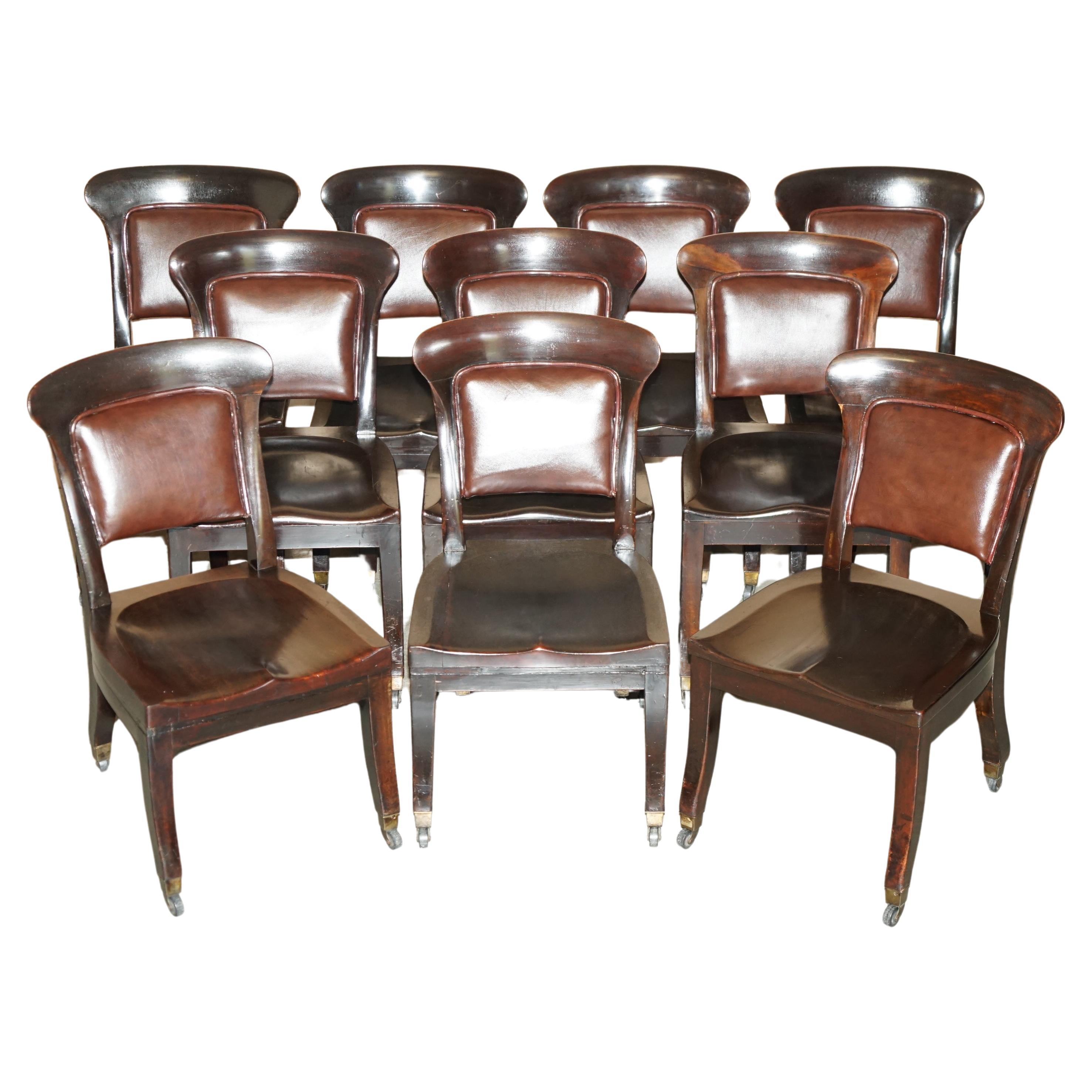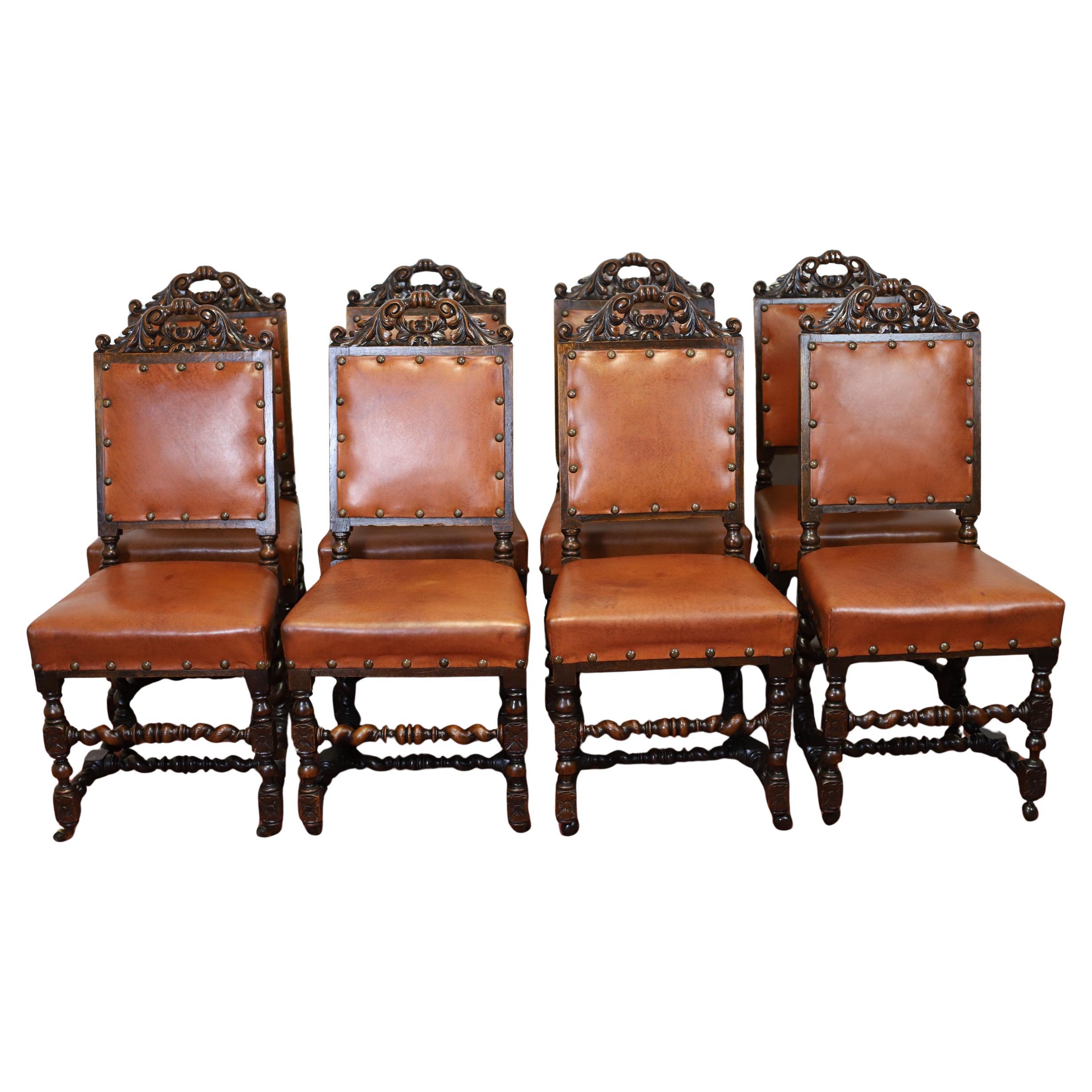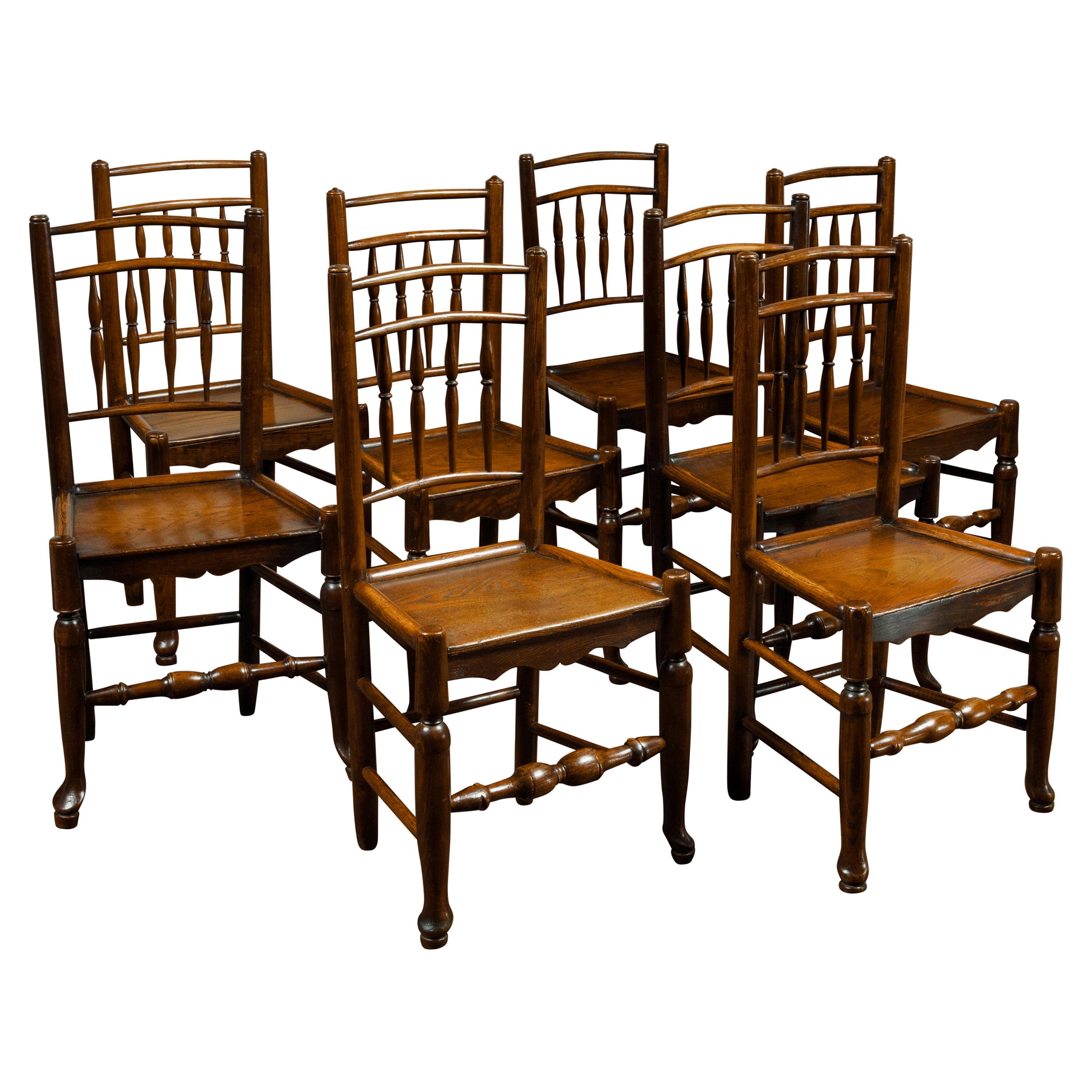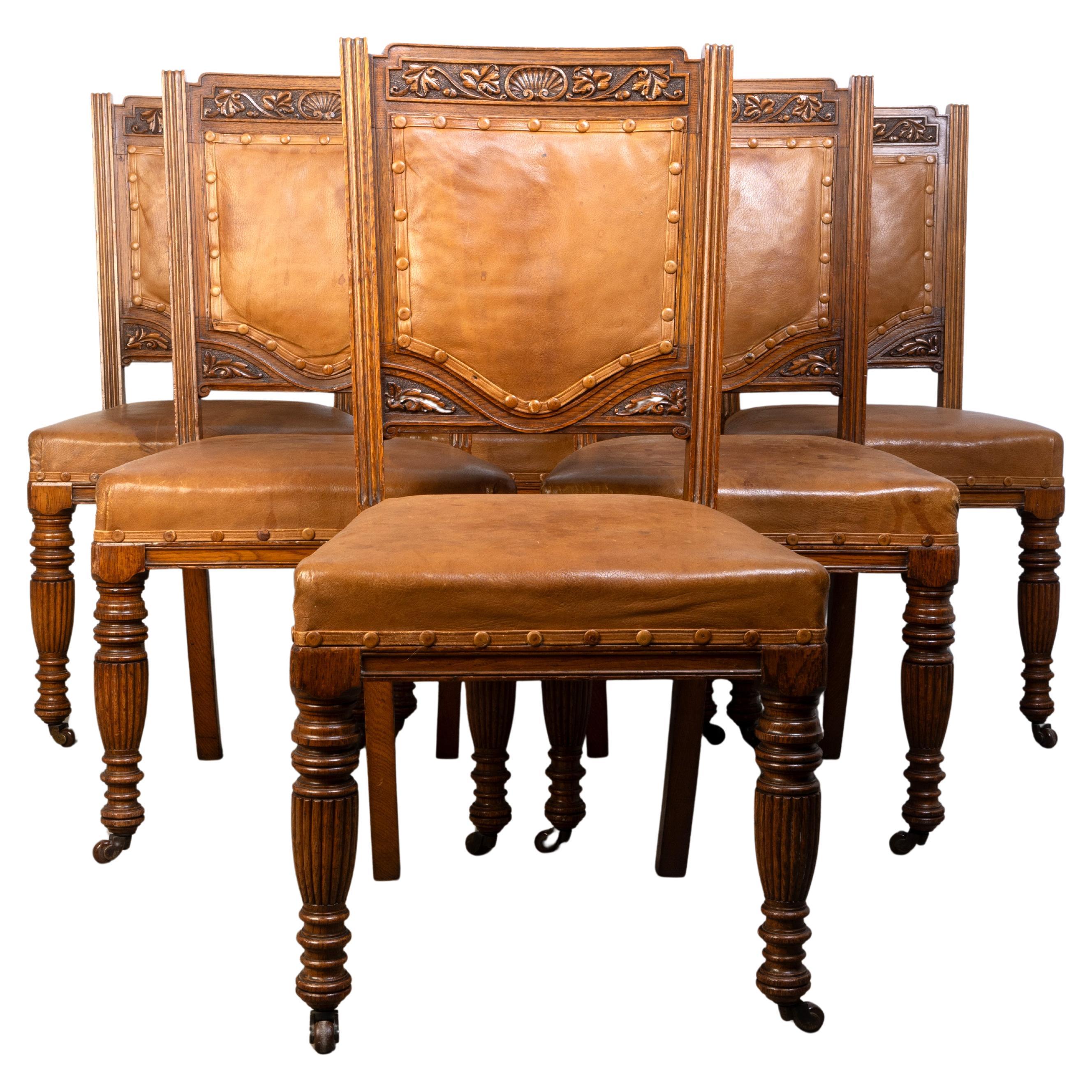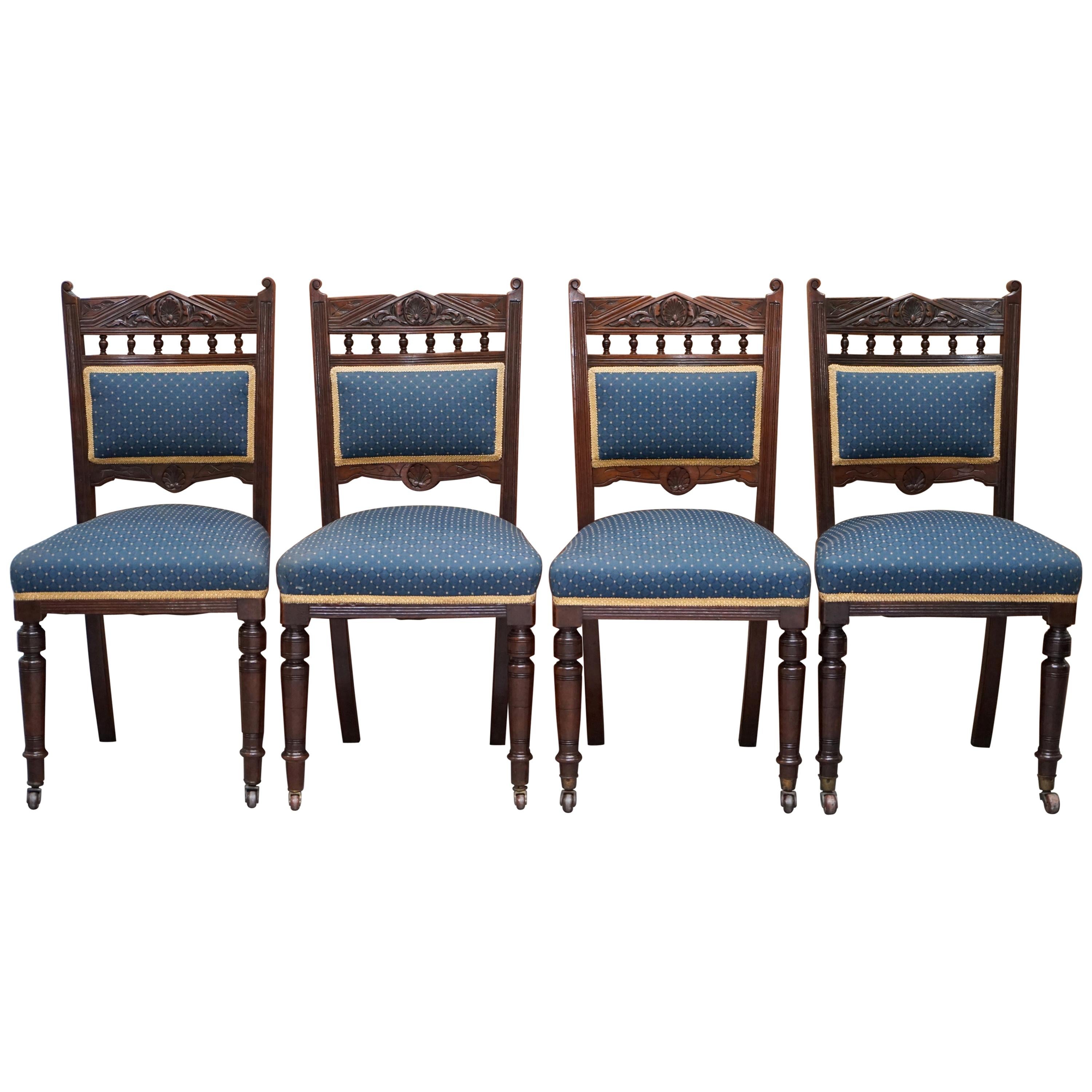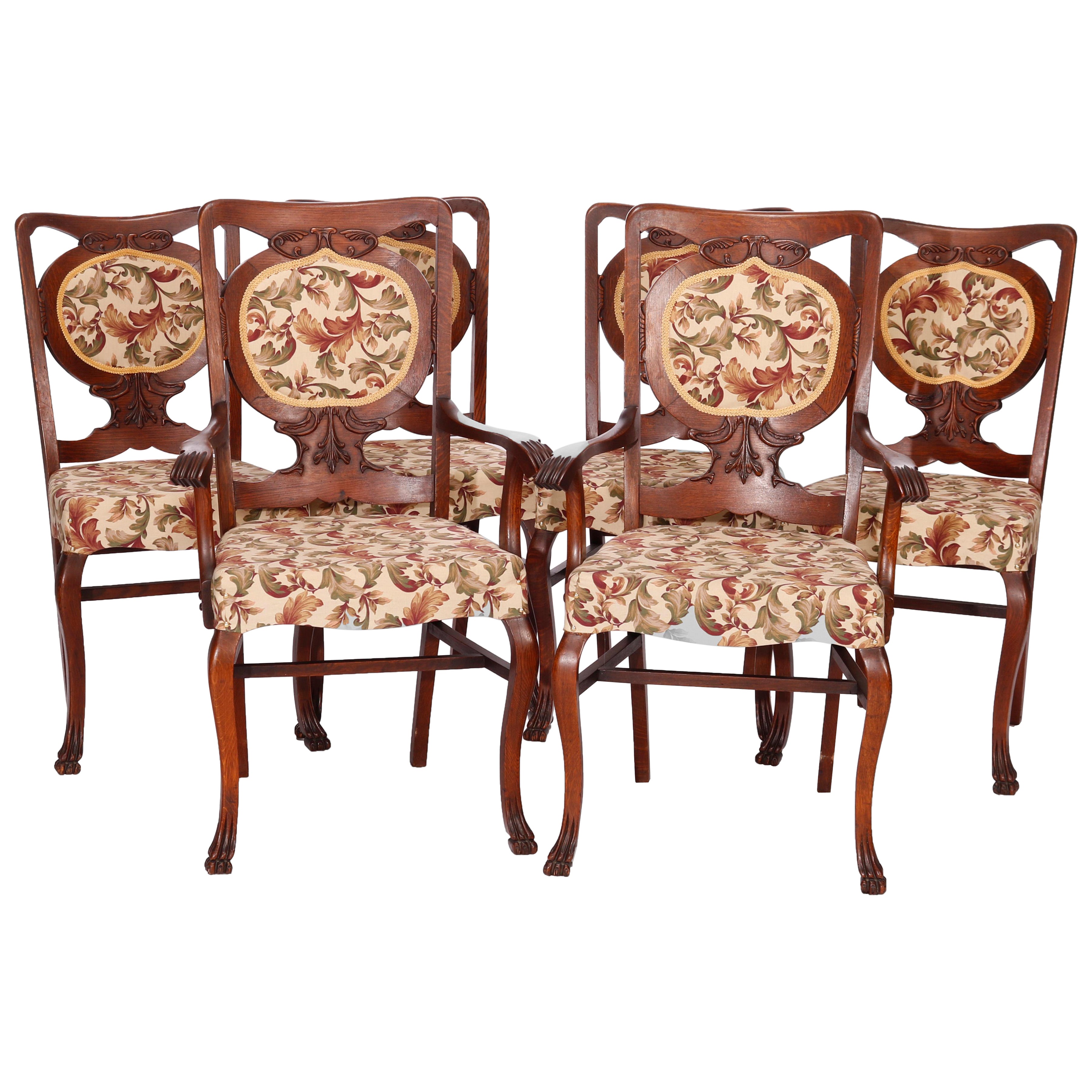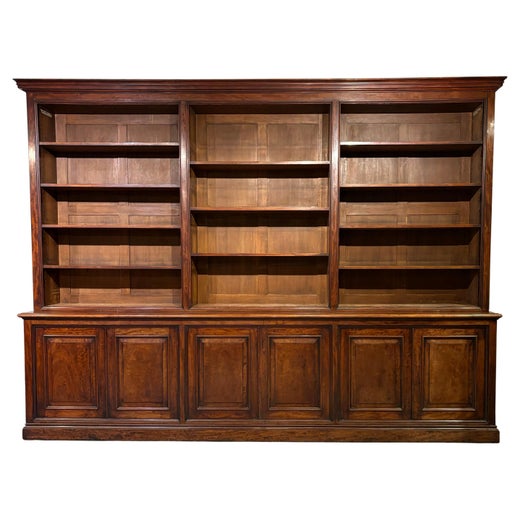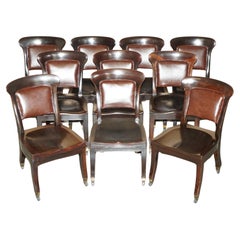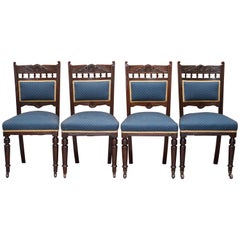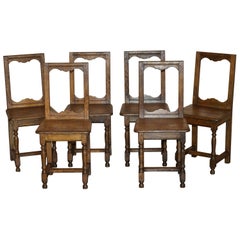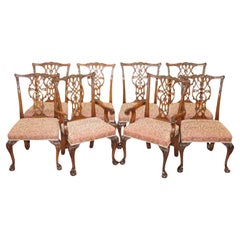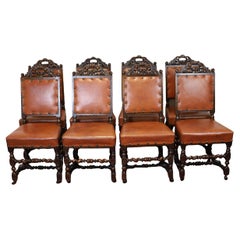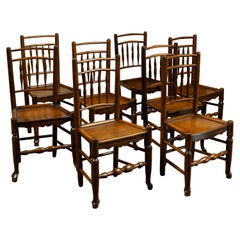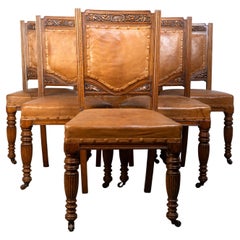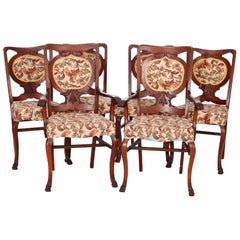FiVE ANTIQUE HOLLAND & SON'S ATTRIBUTED DINING CHAIRS WITH ENGLISH OAK FRAMES 5
About the Item
- Creator:Holland & Sons (Maker)
- Dimensions:Height: 34.26 in (87 cm)Width: 20.08 in (51 cm)Depth: 24.02 in (61 cm)Seat Height: 19.3 in (49 cm)
- Sold As:Set of 5
- Style:Victorian (Of the Period)
- Materials and Techniques:
- Place of Origin:
- Period:
- Date of Manufacture:19th century
- Condition:Wear consistent with age and use. Minor fading.
- Seller Location:West Sussex, GB
- Reference Number:1stDibs: LU2823344938232
Holland & Sons
One of the most influential and successful British furniture manufacturers of the Victorian era, Holland & Sons was renowned for its superb quality. It would be difficult to find collectors unfamiliar with Holland — or its rival, Gillows of Lancaster and London — as the company was a leader in neoclassical and Gothic furniture and interior design in the early to mid-1800s, using only the richest of hardwoods and the finest of metals. Antique Holland & Sons chairs, storage cabinets and tables frequently featured rare-specimen wood marquetry and engraved ivory inlays. The manufacturer’s designs grace the collections of museums around the world and can still be found in the royal homes of Europe.
Two cabinetmakers, Stephen Taprell and William Holland, opened a small joinery in 1815 near Buckingham Palace in London, England, and named it Taprell & Holland. Holland was a relative of the acclaimed Regency architect Henry Holland, the famous gardener and landscape architect Lancelot "Capability" Brown, and the former Member of Parliament Richard Bateman-Robson. This familial edge provided the needed influence for the company among the aristocracy, and their business saw immediate prosperity.
The firm traded under the name Taprell, Holland & Son for a period, and when Taprell retired in 1843, Holland took over the company and changed the name to Holland & Sons. Holland decided to diversify and began offering a broad range of services to the very wealthy — arranging furniture and household decoration rentals, managing funerals and even providing plumbing services. By 1851, they employed over 350 people.
Queen Victoria and Prince Albert commissioned Holland & Sons to supply the entire furnishings of their private homes — Osborne House, Balmoral Castle, Sandringham House and Marlborough House. The Monarch’s satisfaction with Holland and Son’s furnishings led to the company being granted the Royal Warrant of Appointment, affording the owners the opportunity to display the coveted “By Appointment of HM The Queen” mark and her Coat of Arms above the entrance to their offices.
Other Holland & Sons furniture commissions of note include the London Union Club, the Athenaeum Hotel in London, Arundel Castle in West Essex and the All Souls College in Oxford. The firm was also involved in the funerals of Prince Albert and the mother of Queen Victoria — both in 1861 — and contributed works to the 1901 coronation of Edward VII when they made the throne for his wife, Queen Alexandra.
On 1stDibs, find antique Holland & Sons tables, cabinets, seating and more.
- ShippingRetrieving quote...Shipping from: West Sussex, United Kingdom
- Return Policy
More From This Seller
View AllAntique 1860s English High Victorian Dining Room Chairs
Hardwood
Antique 19th Century English Victorian Dining Room Chairs
Upholstery, Hardwood
Antique 1860s English High Victorian Dining Room Chairs
Oak
20th Century English Chippendale Dining Room Chairs
Upholstery, Hardwood
Antique 1860s English High Victorian Dining Room Chairs
Leather, Hardwood
Antique 1820s English Regency Dining Room Chairs
Leather, Oak
You May Also Like
Antique Late 19th Century British Victorian Dining Room Chairs
Leather, Oak
Antique Late 19th Century English Dining Room Chairs
Oak
Antique Late 19th Century English Elizabethan Dining Room Chairs
Leather, Oak
Early 20th Century Armchairs
Oak
Antique Mid-19th Century English Early Victorian Side Chairs
Mahogany
Antique 1880s English Aesthetic Movement Dining Room Chairs
Oak
